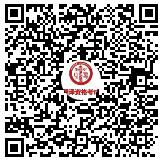
消费者:狂野东部(节选)
中产阶级的兴起正在造就世界上最具活力的消费市场
How would you like your shirt?
This poses a grave threat to old-fashioned retailers. Li & Fung, a supply-chain firm based in Hong Kong, pioneered global outsourcing two decades ago. It has over 3,000 outlets, a third of them in China. Victor Fung, its honorary chairman, sees the era of mass production giving way to one of mass customisation. Markets are fragmenting and smartphones are empowering consumers to get “directly involved in what they buy, where it is made and how they buy it”. Zhao Xiande of CEIBS in Shanghai points to Red Collar, a firm that used simply to make and export garments. Now it lets customers the world over design their own shirts online and makes them to order. Another outfit, Home Koo, offers custom-built furniture online.
All this e-commerce is producing some remarkable business-model innovations. Thanks to the convergence of mobile commerce and social media, observes Miles Young, chairman of Ogilvy & Mather, an advertising firm, China is the world’s epicentre of “social commerce”. Studies by BCG show that Chinese consumers are much more likely than American or European ones to interact with brands through social media.
To try to keep up with all these changes, Mr Fung has kitted out a shopping mall in Shanghai with technologies from IBM that allow detailed tracking of shoppers on site and online. Known as the “Explorium”, it allows retailers to experiment with various multi-channel business models and promotions. Digital disruption challenges retailers everywhere, he says, but in his view China is the most promising place to look for answers.
Chinese consumers are fast becoming the world’s most discriminating and knowledgeable. They are also quite brand licentious. The choice of top global brands there is much wider than in America, Europe or Japan. This has resulted in fierce competition, pushing firms to come up with ever more inventive offerings. Audi developed longer saloon cars to cater to wealthy Chinese with chauffeurs, which are now sold globally. Chinese consumers prefer pulpy juices, so Coca-Cola modified its juice formulations; Minute Maid Pulpy is now a billion-dollar global brand. Even Apple’s Mr Cook says his company takes Chinese tastes into account when it designs new products for the world.
Mr Young believes that China is leading the world in bringing together the “internet of things” (which connects machines to each other) with the internet used by people. Firms such as Suning, an electronics retailer, Haier and Xiaomi are all connecting smart gadgets with consumers through WeChat and other social media. This seems to be happening more quickly in China than in the West.
口译:翻译资格考试三级口译模拟题 翻译资格考试二级口译模拟题 翻译资格考试一级口译模拟题
笔译:翻译资格考试三级笔译模拟题 翻译资格考试二级笔译模拟题 翻译资格考试一级笔译模拟题
 资料来源考试网校乔宏轩老师主讲教材精讲班课程,完整讲义下载进入个人中心>>
资料来源考试网校乔宏轩老师主讲教材精讲班课程,完整讲义下载进入个人中心>>
下载焚题库APP——翻译资格考试——题库——做题,包括章节练习、每日一练、模拟试卷、历年真题、易错题等,可随时随地刷题。【在线做题>>】【下载APP掌上刷题】
翻译资格考试复习有问题?不知道怎么高效备考?加入考试群760421514 和考生一起交流信息。
和考生一起交流信息。


